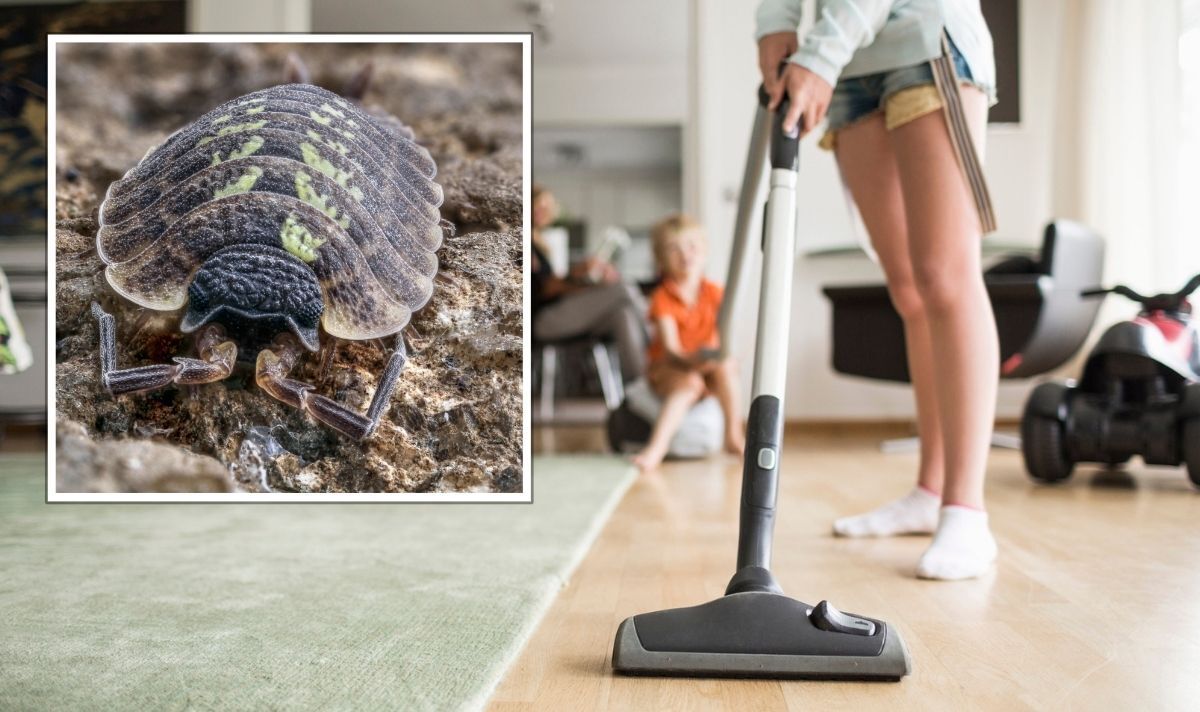Building a shed door with plywood is a practical and cost-effective way to enhance the Woodlice, also known as pill bugs or slaters, are common household pests that thrive in damp, dark environments.
While they are generally harmless, an infestation can become a nuisance, especially when they start invading your living spaces. Unlike many household pests, woodlice don’t spread diseases or bite, but their presence is often a sign of excess moisture in your home, which can lead to other problems.
Fortunately, there are several natural ways to get rid of woodlice without resorting to harsh chemicals. This guide will walk you through practical, eco-friendly methods to eliminate woodlice and prevent future infestations, ensuring your home remains a clean and healthy environment.
Understanding Woodlice: What Are They?
Before diving into the methods of removal, it’s essential to understand what woodlice are and why they might be in your home. Woodlice are small, terrestrial crustaceans that belong to the Isopoda order.
They are commonly found in moist environments such as gardens, under logs, or in compost heaps.
While they primarily feed on decaying organic matter, woodlice can sometimes make their way indoors, particularly during wet weather or when searching for food and shelter.
Characteristics of Woodlice:
- Size and Appearance: Woodlice are typically 1 cm long and have a hard, segmented exoskeleton. Their color ranges from gray to brown.
- Habitat: They thrive in damp, dark places and are commonly found in basements, bathrooms, and kitchens.
- Diet: Woodlice primarily feed on decaying plant material but can also be attracted to mold and mildew in homes with high humidity.
Identifying Signs of a Woodlice Infestation
The first step in dealing with a woodlice problem is to identify whether you have an infestation. Here are some signs to look out for:
- Sightings: The most obvious sign is seeing woodlice in your home, particularly in damp areas like bathrooms or basements.
- Dampness: Woodlice are attracted to moisture, so areas with persistent dampness or leaks are prime spots for them to congregate.
- Damage to Plants: If you have indoor plants, woodlice might feed on the roots, leading to wilting or yellowing leaves.
Natural Methods to Get Rid of Woodlice
1. Reduce Moisture Levels
Since woodlice are drawn to moisture, reducing humidity and dampness in your home is crucial. Here’s how you can do it:
- Fix Leaks: Inspect your home for any leaky pipes, faucets, or roofs. Repairing these can significantly reduce the moisture that attracts woodlice.
- Improve Ventilation: Ensure proper ventilation in areas prone to dampness, such as bathrooms and kitchens. Installing exhaust fans or using dehumidifiers can help maintain a dry environment.
- Use Desiccants: Place moisture-absorbing materials like silica gel or activated charcoal in areas where woodlice are commonly found. These desiccants can help reduce humidity levels and make your home less hospitable to woodlice.
2. Seal Entry Points
Woodlice often enter homes through small cracks and gaps. Sealing these entry points can prevent them from getting inside:
- Inspect and Repair: Check your home’s foundation, walls, windows, and doors for any cracks or gaps. Use caulk or weatherstripping to seal these areas.
- Install Door Sweeps: Adding door sweeps to exterior doors can help block woodlice from crawling inside.
- Maintain Screens: Ensure that window and door screens are intact and free of holes.
3. Remove Outdoor Attractants
Woodlice often migrate indoors from nearby outdoor areas. Removing potential attractants outside your home can help reduce the likelihood of an infestation:
- Clear Debris: Remove piles of leaves, wood, and other organic matter from around your home’s foundation. These materials can provide shelter and food for woodlice.
- Elevate Firewood: Store firewood off the ground and away from your home to prevent woodlice from taking up residence.
- Trim Vegetation: Keep shrubs and plants well-trimmed and away from your home’s walls to reduce moisture accumulation and potential entry points.
4. Natural Repellents

Several natural substances can act as repellents to deter woodlice from entering your home:
- Diatomaceous Earth: This natural powder is made from fossilized remains of diatoms and can be sprinkled around entry points. Diatomaceous earth dehydrates woodlice upon contact, effectively killing them.
- Essential Oils: Oils like tea tree, eucalyptus, and peppermint have strong scents that repel woodlice. Mix a few drops with water and spray around entry points and infested areas.
- Garlic: Crushed garlic or garlic powder can be placed near areas where woodlice are found. The strong smell acts as a natural deterrent.
5. Trapping Woodlice
If you’re dealing with a significant infestation, trapping woodlice can help reduce their numbers quickly:
- Potato Trap: Cut a potato in half and hollow out a portion of it. Place the potato halves in infested areas, cut side down. Woodlice will be attracted to the moisture and starch and can be easily removed and disposed of the next day.
- Moist Cardboard Trap: Place a piece of damp cardboard on the floor near where woodlice are present. They will be drawn to the moisture and can be collected and disposed of the following day.
6. Encourage Natural Predators
Introducing or encouraging natural predators of woodlice can help keep their population in check:
- Spiders: Common house spiders prey on woodlice, so allowing them to stay in your home (within reason) can help reduce the woodlice population.
- Ground Beetles: These beetles are natural predators of woodlice. Encouraging a healthy garden ecosystem can help keep woodlice numbers down outside, preventing them from migrating indoors.
Long-Term Prevention of Woodlice Infestations
Once you’ve successfully dealt with a woodlice infestation, taking steps to prevent future problems is essential:
1. Regular Home Maintenance
- Inspect Regularly: Conduct regular inspections of your home for signs of dampness, leaks, or cracks that could attract woodlice.
- Clean Gutters: Ensure that gutters and downspouts are clear of debris to prevent water buildup near your home’s foundation.
- Maintain Ventilation: Keep up with proper ventilation practices, particularly in moisture-prone areas.
2. Landscaping Tips
- Proper Drainage: Ensure that your yard has adequate drainage to prevent water from pooling near your home’s foundation.
- Mulch Carefully: While mulch is great for your garden, it can also attract woodlice. Keep mulch away from your home’s walls and use it sparingly.
3. Monitor Indoor Plants
- Avoid Overwatering: Overwatering indoor plants can create damp conditions that attract woodlice. Water plants only when necessary and ensure proper drainage.
- Inspect Plant Pots: Regularly check plant pots for signs of woodlice and remove any you find.
Conclusion
Dealing with woodlice in the home can be frustrating, but with the right natural methods, you can eliminate them and prevent future infestations without resorting to harmful chemicals. By addressing moisture issues, sealing entry points, removing outdoor attractants, and using natural repellents and traps, you can create an environment that’s inhospitable to woodlice.
Remember, prevention is key, so maintaining your home and garden will go a long way in keeping these pesky crustaceans at bay. With a little effort and vigilance, your home can remain woodlice-free and a more comfortable place to live.




